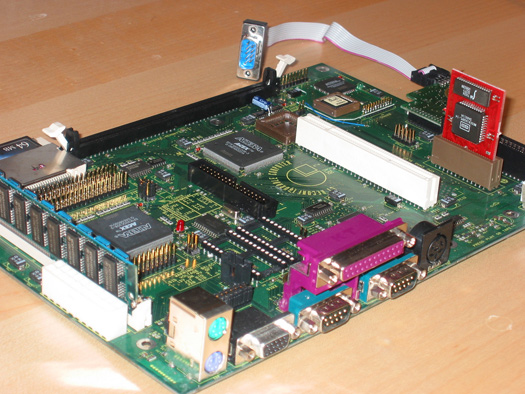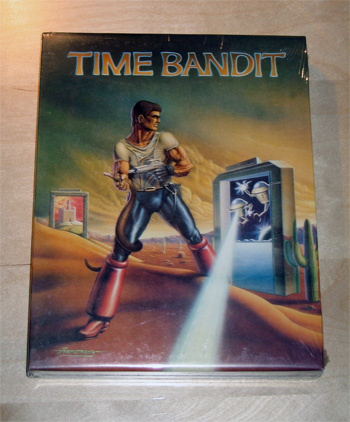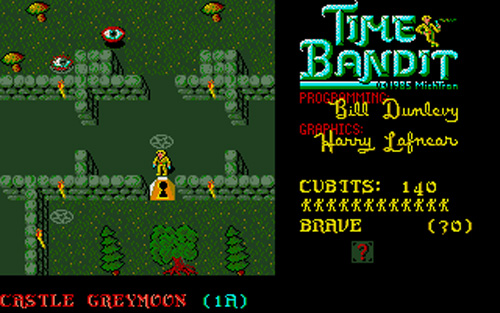It seems Retro Gamer magazine, which I spoke of a while back, has added a few seconds to my allotted 15 minutes of fame. I’ll explain how. In issue 10 there is a nice, 10-page article about the Apple IIgs [ pics of my IIgs ] that reveals a wide range of historical facts and trivia. It’s a great read complete with many color photos and it’s most pleasing to see a machine that figured so prominently in my past put back in the spotlight. One area where the article is a bit misleading, however, is in its description of the IIgs as a 16-bit machine akin to the Commodore Amiga and Atari ST.
While the IIgs has graphics capabilities more or less similar to those machines, and audio hardware more powerful than either, strictly speaking the IIgs is an 8-bit machine. The Amiga/ST employ the Motorola 68000 CPU which is a 16/32-bit CPU, in that it uses 32-bit internal registers but sits on a 16-bit data bus through which it communicates with the outside world. At the heart of the IIgs lies a WDC 65C816 processor which is an 8/16-bit CPU, in that it has 16-bit internal registers, but sits on an 8-bit data bus. The only way one could consider the IIgs to be a 16-bit machine is if the internal CPU architecture alone is being referenced, and from that point of view the Amiga/ST become 32-bit machines.
At any rate, feeling the matter needed to be clarified, I sent an e-mail to the editor that described the above…and promptly forgot the matter. Several weeks later I was paging through issue 11 when I came across a letter to the editor which was pointing out this inaccuracy. I began to read with interest, as I recalled that the same inaccuracy had bugged me when I read the original article. (I still did not recall that I had written in about it.) It wasn’t until about half-way through the piece that I was so struck by this reader laying out point after point that I had wanted to make, that I jumped to the end to see who it could be. Shock and surprise—it was me! There was my e-mail, in full, complete with a link to this site.
I guess between this printing, my inclusion in The Cult of Mac, and the NY Times appearance from ’99, I am on my way to stardom….


 Last night I happened across quite the piece of nostalgic computing goodness. Over at b3ta.com, MJ Hibbert and Rob Manuel have put together a flash-based music video entitled
Last night I happened across quite the piece of nostalgic computing goodness. Over at b3ta.com, MJ Hibbert and Rob Manuel have put together a flash-based music video entitled 

